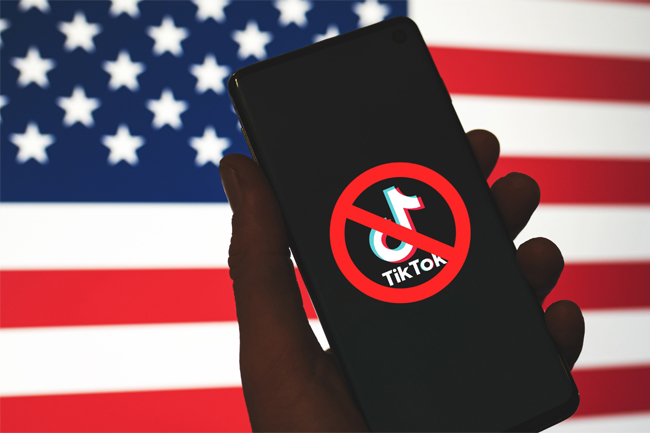Millions of individuals around the world are protesting in solidarity with the Black Lives Matter movement, and many are asking themselves how they can bring the same spirit of solidarity into their work lives. Or, as one of our colleagues recently expressed in an email: “I don’t want to be one of those white males who is privately sympathetic. I want to actively champion women and minorities.”
The good news is that majority group members and men have an immense source of power at their disposal to prevent and confront bias in the workplace: their social networks. Here is how you can take action.
Use your social network to broadcast anti-racist, anti-sexist values.
You have a bigger sphere of influence than you realize. Most people think about their immediate circle of friends as their audience. However, research in the study of social networks has shown they are wrong. Your ideas and behaviors ripple out from you, influencing your friends, friends of friends whom you may not even know, and friends of those friends as well. In fact, a whole range of outcomes are influenced by these third order ties – your weight, your values and beliefs, even your risk of divorce. This is your sphere of influence, in both your place of work and your daily life.
How can this help you contribute to an anti-racist, anti-sexist workplace? The answer is deeply rooted in our psychology. We are a fundamentally social species. From an evolutionary perspective, we survive not as individuals but rather because of our ability to get along with others and work as a group. This means that we experience a lot of emotional tension when we disagree with our friends on issues that are important to us. It also means that when new ideas and proposals are made in the workplace — such as diversity and inclusion initiatives — we are primed to adopt our friends’ views of those initiatives in order to maintain an emotionally balanced state. Put another way, if my friend likes the diversity and inclusion initiative, then I am more likely to support the diversity and inclusion initiative.
The implication is that you have enormous capacity to influence others to be anti-racist and to be anti-sexist in the workplace — those you know directly and individuals as many as three social steps away from you. But to make a real impact, you must move your conversations with colleagues, and what you share online, beyond value statements toward concrete anti-bias actions. Share your support for de-biasing your organization with your friends, engage them in conversations about the problems of bias and exclusion in your workplace, and tell them what actions you are taking to make your team fair and inclusive. Unless they are committed to racism and sexism, they will be influenced to share your sentiments, and to speak with their friends about it, who then will do the same.
How do you enact this, concretely? Take the example of a manager who talks over your Black team member every meeting. Assuming you have noticed this, first touch base with your team member to both confirm that this is their experience and ask for permission to subtly intervene. (After all, they may face backlash from any type of confrontation.) If you are able to intervene — perhaps by pointing out that your colleague was not finished speaking and returning the floor to them — you can then discuss this interaction with both your work friends and your out-of-work friends. Those friends will then share aspects of that conversation with their friends, and so on.
Because of the power of the network, you want to be thoughtful about how you speak and what you share — the point of this is not to offer yet another trite and untrue white/male savior narrative. Every detail will not make it through the network, so you must highlight the right ones: You have started to notice subtle biases in your own workplace, you are bothered by them, you carefully avoided overstepping by touching base with your co-worker, and then you intervened even though it was uncomfortable. End by emphasizing anti-bias values and the majority’s responsibility for addressing and fixing the problem.
In this way, you can help to create a new norm in your organization. It matters that you to do this now, during the peak of this social movement. But it is also essential to do this again in a month, and a few weeks after that, to show sustained support of anti-bias values.
Empower — and back up — women and racial minorities by including them in your social network.
Minorities and women often want to confront biased comments, but they feel held back by the potential social and professional costs. Our recent research found that majority group members and men have a role to play in empowering women and racial minorities who want to speak up to verbally confront a biased comment. Again, the key is how you use your social network.
In 6 studies (N = 2,163), we compared women who were sought after for advice by others in their workplace (i.e., those in central social network positions) to women who were not (i.e., those in peripheral social network positions). We found that women in central advice network positions were statistically significantly more likely to confront gender bias. This was true both when women thought about how they would behave in a scenario that described a coworker making a biased comment to them, and when they reported how they had behaved when they had experienced bias in the workplace in the past. Even when the person who made the sexist comment in the scenario was the woman’s boss, or when we reminded women of the risks of speaking out, being central in the advice network predicted women’s confronting of gender bias. Why? An important factor was that women who are central in their advice networks believe their coworkers are similarly offended by gender bias and support their confronting it.
The key lesson for men and majority group members from our research is this: When you include individuals who are the targets of stereotyping and bias in your network, you and others signal to them that diversity and equitable treatment are important values. If you hear the comment, of course seize the moment to speak out. But even if you are not there to witness it, your inclusion of underrepresented colleagues in your network can empower them to speak out.
How do you purposefully transform your social network? Majority group members and men must begin practicing what we call an active inclusion approach.
Put active inclusion into practice.
Think about your social network. If you are a man or majority group member in your national context, it is almost certain that the people in your network are overwhelmingly demographically similar to you. Decades of research backs this up. As a result, any individual who is in a numerical minority, such as racial minorities in leadership or women in STEM fields, are excluded from the informal life of their organizations or teams. This exclusion has negative consequences, not only for the careers of women and racial minorities, but also for their sense of belonging at work.
Interestingly, in our teaching and consulting we find that majority group members are rarely aware that this is happening until we show them the data from their own organizations or networks. We have also come to understand that leaders almost never consider how the informal exclusion of women and racial minorities might be undermining their well-intentioned diversity and inclusion corporate initiatives.
Passive exclusion must be countered with active inclusion. That means that if you are a man or a majority group member, you must make an effort to bring women and racial minorities into your informal social network. Actively include your minority and women colleagues in informal meetings and discussions, whether they are focused on work or fun, seek their advice on issues relevant to their work expertise (not just their identities), and uncover commonalities as well as the ways you can learn from them. These interactions might be awkward or stressful at first, but they must not take on a paternalistic “I’m here to help you” tone. You should ready yourself to learn some potentially unpleasant realities about the world as you might have failed to perceive it, about yourself, or about people you otherwise like and admire. Minorities and women constantly navigate a world in which they work to make the majority group members around them comfortable, which often means minimizing bias they experience in organizations.
An active inclusion approach to social networking requires you to forge a real relationship, one in which your minority and women colleagues can share both their professional expertise and their experience of the world with you, without having to anticipate backlash from you, or disappointment with your response, when they do. To achieve this, make sure you signal that you respect (in addition to like) these colleagues — it is critical that they know you see them as equals.
Active inclusion goes beyond simply extending invitations. It also means using the power of your network connections in service of supporting your women and minority colleagues. Introduce women and racial minorities to people in your network who they would otherwise find difficult to meet. When an opportunity comes to you through your network (e.g., when you are asked to contribute to a special project at work or sit on a panel), offer the opportunity to a woman or racial minority instead, or offer yourself up as a package deal to present together. This doesn’t mean giving them the less desirable opportunities, it means sharing opportunities that would be beneficial to your career.
This is the essence of anti-racism and anti-sexism work: giving up your privilege to make things more equitable. And you can start with your social network.


